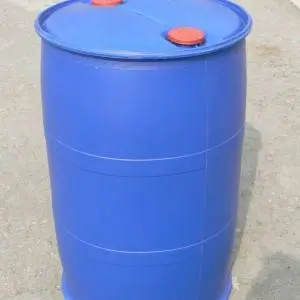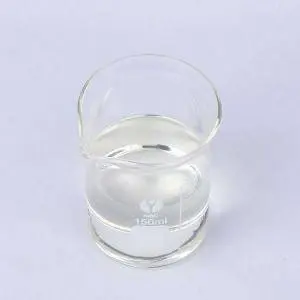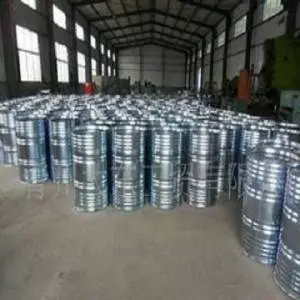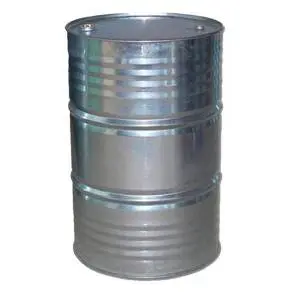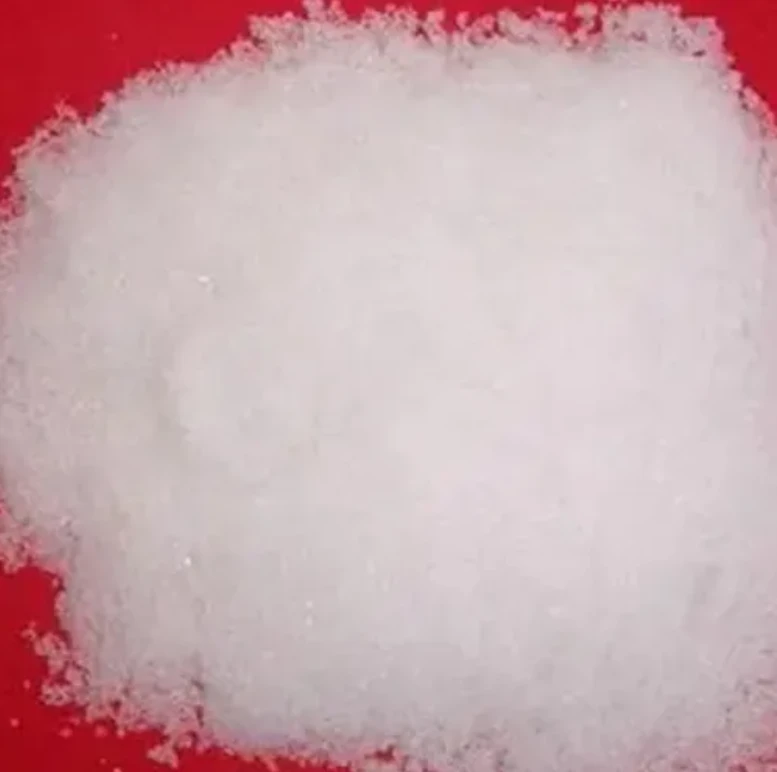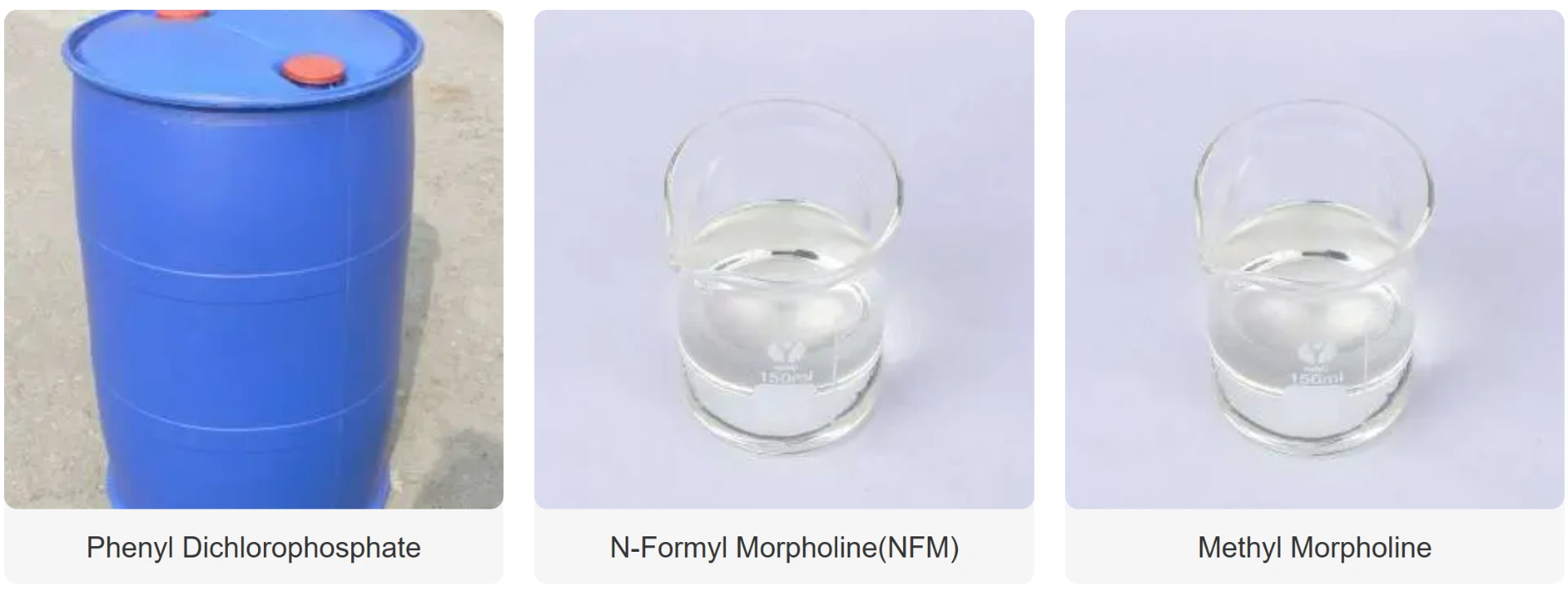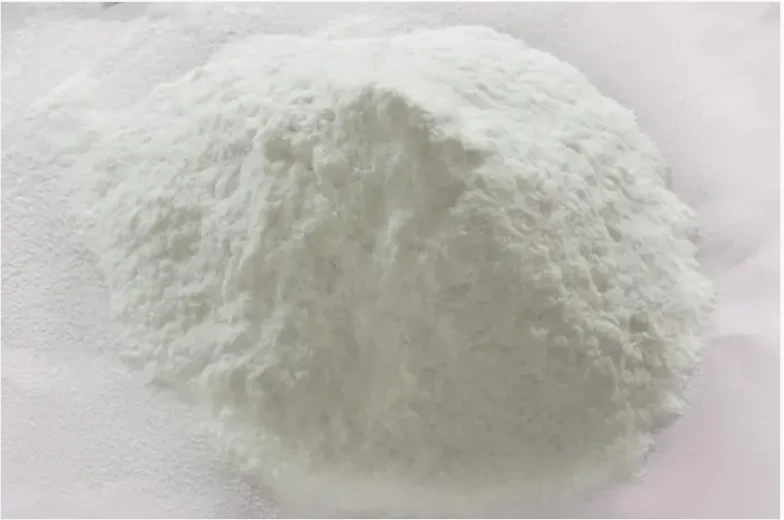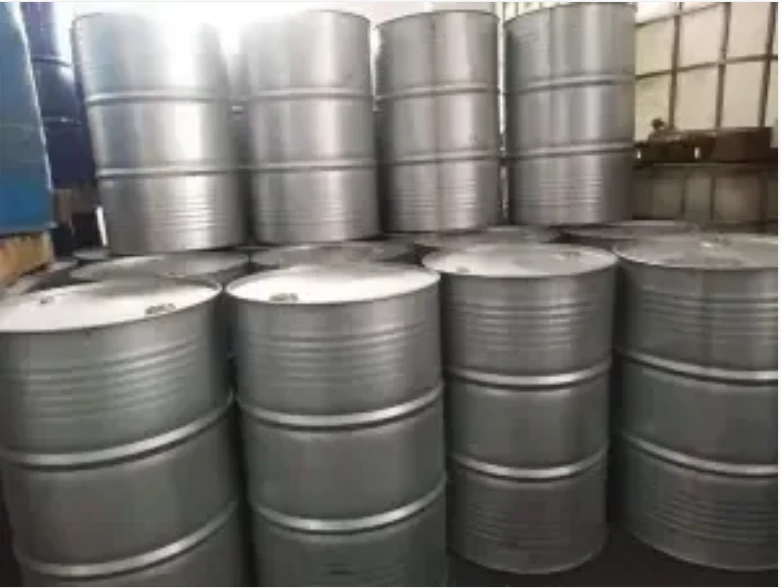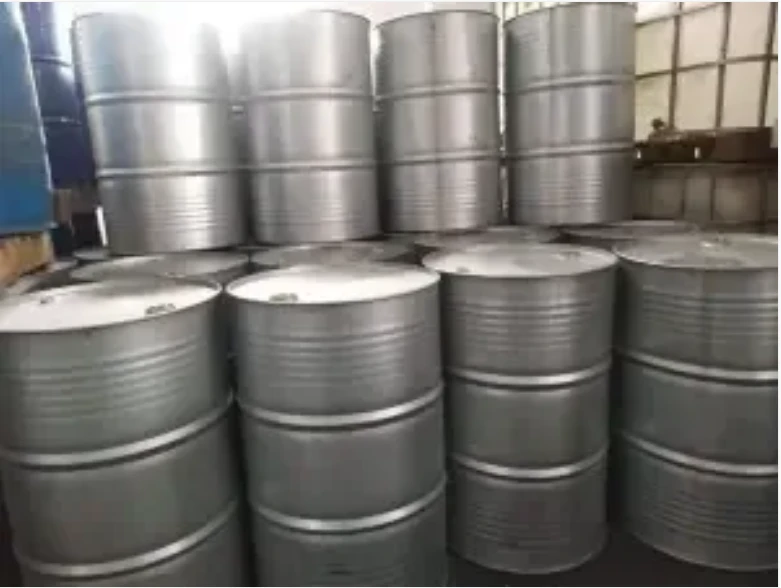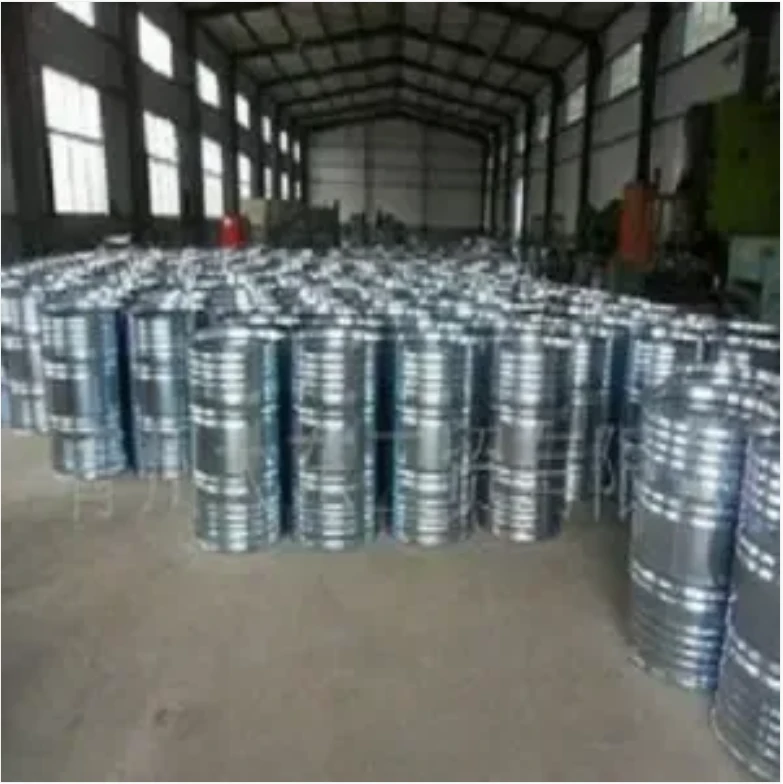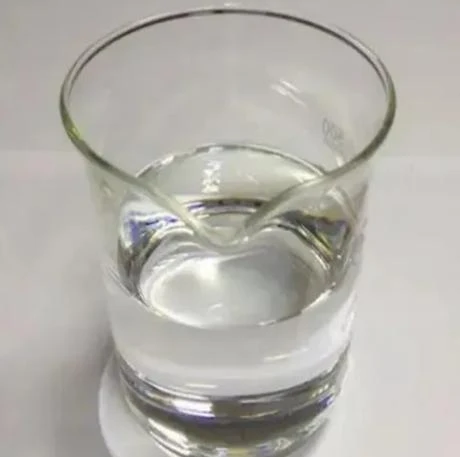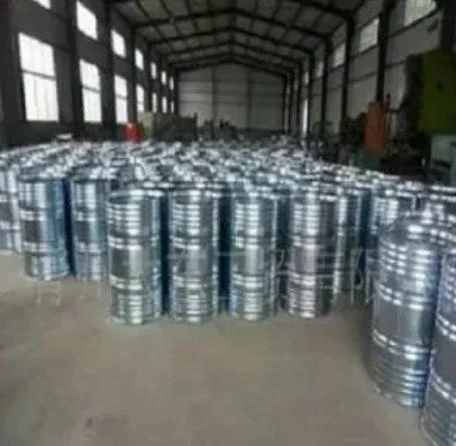Tetramethyldiethylenetriamine (TMDETA) - High Purity Grade
Explore the multifaceted world of Tetramethyldiethylenetriamine – a crucial chemical compound driving innovation across diverse industries.
In the vast landscape of organic chemistry, certain compounds stand out due to their unique properties and indispensable roles across a multitude of industrial applications. Among these, Tetramethyldiethylenetriamine, often abbreviated as TMDETA, emerges as a pivotal chemical, widely recognized for its versatile applications as a catalyst, an intermediate in synthesis, and a crucial component in various specialty chemicals. This in-depth article aims to provide a comprehensive overview of Tetramethyldiethylenetriamine, delving into its chemical properties, manufacturing processes, key applications, market trends, and the technical advantages it offers. We will also explore the stringent quality standards, customization possibilities, and real-world success stories that underscore its significance in modern industry.
Industry Trends and Market Dynamics of Tetramethyldiethylenetriamine
The market for Tetramethyldiethylenetriamine is experiencing robust growth, driven by increasing demand from key end-use industries such as polyurethanes, pharmaceuticals, agrochemicals, and water treatment. Global market reports indicate a Compound Annual Growth Rate (CAGR) of approximately 5-7% for amine catalysts and intermediates, with Tetramethyldiethylenetriamine playing a significant role within this segment.
The polyurethane industry, in particular, is a major driver, utilizing TMDETA as a co-catalyst to accelerate reactions in foam production, rigid insulation panels, and elastomers. The global polyurethane market itself is projected to reach USD 90 billion by 2028, according to recent industry analyses, directly impacting the demand for its constituent chemicals like Tetramethyldiethylenetriamine. Furthermore, the burgeoning pharmaceutical sector, with its continuous need for efficient reaction intermediates and reagents, is steadily expanding its consumption of high-purity TMDETA. Emerging trends include the development of bio-based Tetramethyldiethylenetriamine, driven by sustainability initiatives, and its increasing adoption in specialized applications such as gas purification and high-performance coatings, signaling a dynamic and evolving market landscape.
Understanding Tetramethyldiethylenetriamine: Technical Parameters and Properties
Tetramethyldiethylenetriamine (TMDETA) is an organic compound with the chemical formula C8H23N3. It is a tertiary amine, characterized by its distinctive structure containing three nitrogen atoms, each bonded to alkyl groups, which imparts unique catalytic and complexing properties.
Key Chemical and Physical Properties:
- CAS Number: 112-24-3
- Molecular Formula: C8H23N3
- Molecular Weight: 157.29 g/mol
- Appearance: Clear, colorless to pale yellow liquid
- Odor: Ammoniacal, amine-like
- Boiling Point: Approximately 216-217 °C (at 760 mmHg) – This high boiling point indicates low volatility, making it suitable for applications where minimal evaporation is desired.
- Density: ~0.89 g/cm³ at 20 °C – Lighter than water, important for handling and storage.
- Solubility: Miscible with water and many organic solvents (e.g., ethanol, ether) – Its good solubility profile enhances its versatility in various formulations and reactions.
- Flash Point: ~90-95 °C (Closed Cup) – Essential for safety protocols during transport and storage.
- Viscosity: Low viscosity, facilitating ease of pumping and mixing in industrial processes.
- Basicity: As a polyamine, it exhibits strong basicity, allowing it to act as an effective proton scavenger and catalyst in specific reactions.
These parameters collectively highlight Tetramethyldiethylenetriamine's suitability for demanding industrial applications. Its stability, excellent solubility, and catalytic prowess make it an invaluable component in a wide range of chemical syntheses and product formulations.
Typical Tetramethyldiethylenetriamine Product Specifications
| Parameter | Specification | Testing Method |
|---|---|---|
| Purity (GC) | ≥ 99.0% | GC (Gas Chromatography) |
| Moisture Content | ≤ 0.1% | Karl Fischer Titration |
| Color (APHA) | ≤ 50 | ASTM D1209 |
| Specific Gravity (20/20°C) | 0.890 - 0.900 | ASTM D4052 |
| pH (1% aqueous solution) | ~10-12 | Electrometric |
| Freezing Point | < -20°C | Visual/Thermometric |
| Distillation Range (95%) | 215 - 220°C | ASTM D1078 |
The Meticulous Manufacturing of Tetramethyldiethylenetriamine: A Detailed Process Flow
The production of high-quality Tetramethyldiethylenetriamine requires a sophisticated multi-step chemical synthesis process, adhering to stringent quality control standards at every stage. The primary method involves the reductive amination of dimethylamine with formaldehyde, or through the reaction of diethylenetriamine (DETA) with methylating agents.
Typical Manufacturing Process Overview:
High-purity dimethylamine, formaldehyde (or methanol/other methylating agents), and specific catalysts are precisely measured and prepared. The quality of these starting materials, often sourced from certified suppliers, directly impacts the final product's purity and performance.
(Material Purity & Sourcing)
The chosen reactants are introduced into a specialized reactor under carefully controlled conditions (temperature, pressure, pH). This is typically a catalytic reaction, often involving a noble metal catalyst (e.g., palladium on carbon) or a specialized acid catalyst. The reaction converts the primary/secondary amines into tertiary amines through methylation. Precision control of these parameters is critical to maximize yield and minimize by-product formation.
(Manufacturing Process: Catalytic Reaction)
After the primary reaction, the crude product mixture is cooled (quenched) and then subjected to initial separation steps, which may include phase separation or neutralization to remove unreacted raw materials or unwanted side products. This step is crucial for preparing the product for subsequent purification.
(Initial Separation)
The main purification step often involves fractional distillation under vacuum. Due to the relatively high boiling point of Tetramethyldiethylenetriamine, vacuum distillation is employed to separate it from impurities with different boiling points, ensuring a high-purity final product (typically >99%). This is a precise engineering process, often utilizing stainless steel equipment (e.g., 316L for corrosion resistance) to maintain purity.
(Manufacturing Process: Distillation, Material: Stainless Steel)
Throughout and after the entire process, rigorous quality control (QC) checks are performed. This includes Gas Chromatography (GC) for purity, Karl Fischer titration for moisture content, and visual inspection for color and clarity. Adherence to international standards like ISO 9001:2015 is paramount. Our products undergo testing to meet or exceed industry benchmarks such as those outlined by ASTM (American Society for Testing and Materials) and internal proprietary standards, ensuring consistency and reliability.
(Detection Standard: ISO, ASTM)
The purified Tetramethyldiethylenetriamine is then carefully packaged into appropriate container111s (e.g., drums, IBC tanks) under nitrogen blanket to prevent oxidation and maintain product integrity. Proper storage conditions (cool, dry, well-ventilated area) are vital for preserving product quality and extending its shelf life.
(Packaging, Storage)
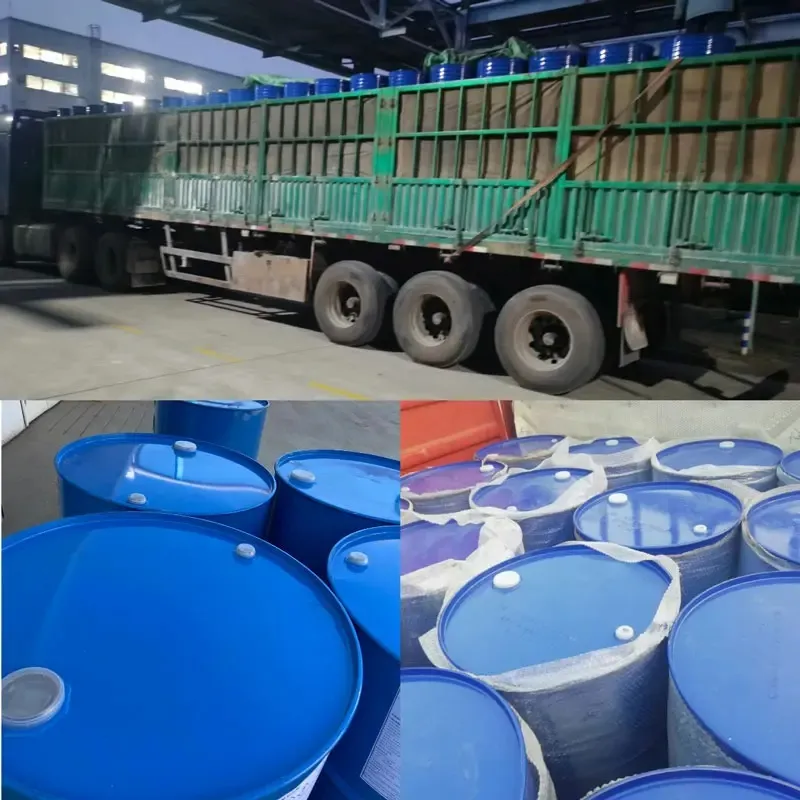
Figure 1: Illustration of a typical chemical synthesis process for Tetramethyldiethylenetriamine.
Product Material, Manufacturing Craftsmanship, and Longevity:
The integrity of Tetramethyldiethylenetriamine is not just about its chemical composition but also the materials and processes used in its handling. Manufacturing equipment often utilizes high-grade stainless steel (e.g., SS316L) to prevent contamination and corrosion, ensuring the purity of the final product. Techniques like advanced distillation columns and precision flow control systems are central to maintaining the consistent quality and high yield. The rigorous production standards and quality assurance protocols contribute to an excellent service life for Tetramethyldiethylenetriamine, ensuring its stability and efficacy over extended periods when stored correctly. This meticulous approach ensures that each batch of Tetramethyldiethylenetriamine performs optimally in its intended applications, providing reliable performance and excellent value to our customers.
Versatile Applications of Tetramethyldiethylenetriamine Across Industries
Tetramethyldiethylenetriamine (TMDETA) is a highly versatile chemical with a broad spectrum of applications across diverse industrial sectors, thanks to its unique properties as a strong base, ligand, and reaction accelerator.
Key Applicable Industries and Advantages:
-
Polyurethane Industry:
TMDETA is extensively used as a co-catalyst in the production of polyurethane foams (flexible, rigid, and integral skin foams). Its role is to accelerate both the gelling and blowing reactions, leading to improved foam properties, faster demolding times, and reduced energy consumption during curing. In rigid foam applications, TMDETA contributes to the formation of fine, uniform cell structures, enhancing insulation efficiency (Energy Saving).
-
Chemical Synthesis & Pharmaceuticals:
As a potent tertiary amine, Tetramethyldiethylenetriamine serves as a crucial intermediate and reagent in the synthesis of various specialty chemicals, including pharmaceuticals, agrochemicals, and dyes. Its basicity makes it an effective proton scavenger in sensitive reactions, while its ability to form stable complexes makes it valuable in organometallic chemistry. This ensures high yields and purity in complex chemical reactions.
-
Oil & Gas / Petrochemical Industry:
In the petrochemical sector, Tetramethyldiethylenetriamine can be employed as a corrosion inhibitor or a component in demulsifiers. Its amine structure allows it to form protective layers on metal surfaces, mitigating the corrosive effects of acidic components in crude oil and natural gas streams (Anti-Corrosion). This extends the lifespan of pipelines and processing equipment, reducing maintenance costs.
-
Water Treatment and Desalination:
TMDETA finds use in water treatment applications, particularly as a component in scale and corrosion inhibitors for industrial cooling systems and boilers. It helps prevent the buildup of mineral deposits and the degradation of metallic components, improving system efficiency and reducing downtime. In some advanced water treatment processes, its chelating properties can assist in the removal of heavy metal ions. This is critical for maintaining infrastructure in industries like Water Supply & Drainage.
-
Adhesives, Sealants & Coatings:
In these sectors, Tetramethyldiethylenetriamine functions as a curing agent or accelerator for epoxy resins and other polymer systems, providing rapid cure times and enhancing mechanical properties. Its inclusion leads to durable, high-performance materials suitable for demanding environments.
-
Textile & Leather Processing:
Used as a dyeing assistant or a component in formulations for leather treatment, TMDETA helps improve dye uptake and fixation, leading to better color fastness and overall product quality.
The broad applicability of Tetramethyldiethylenetriamine underscores its importance as a foundational chemical. Its ability to impart benefits like energy saving and anti-corrosion properties in specific industrial contexts highlights its value beyond just a chemical intermediate.
Technical Advantages and Performance Superiority
The superior performance of Tetramethyldiethylenetriamine stems from its unique molecular structure, which offers several distinct advantages over other amine-based compounds or conventional catalysts.
- High Catalytic Activity and Selectivity: As a strong tertiary amine, TMDETA exhibits excellent catalytic efficiency, particularly in reactions requiring a strong base or nucleophile. In polyurethane synthesis, for instance, it precisely balances gelling and blowing reactions, leading to foams with optimized cell structure and physical properties. Its high selectivity minimizes unwanted side reactions, ensuring a cleaner product profile and higher yields.
- Low Volatility and Thermal Stability: With a relatively high boiling point, Tetramethyldiethylenetriamine demonstrates low volatility, which is crucial for applications where consistent vapor pressure and minimal loss are desired. Its thermal stability ensures integrity even under elevated processing temperatures, providing reliable performance in demanding industrial environments.
- Excellent Solubility Profile: TMDETA is readily soluble in water and a wide range of organic solvents, facilitating its incorporation into diverse formulations and reaction systems. This broad miscibility simplifies blending and ensures uniform distribution, which is vital for consistent product quality.
- Versatile Complexing Agent: Beyond its catalytic role, Tetramethyldiethylenetriamine acts as an effective chelating agent, capable of forming stable complexes with metal ions. This property is leveraged in applications such as metal sequestration, electroplating, and as a component in certain polymerization initiators, offering enhanced process control and product quality.
- Improved Process Efficiency: By accelerating reaction rates and enhancing selectivity, Tetramethyldiethylenetriamine contributes to significant improvements in manufacturing efficiency. This translates to reduced reaction times, lower energy consumption during curing, and increased throughput, leading to substantial cost savings and greater productivity for end-users.
- Corrosion Inhibition Capabilities: In specific formulations, particularly within the oil & gas and water treatment sectors, Tetramethyldiethylenetriamine contributes to corrosion inhibition. Its molecular structure allows it to adsorb onto metal surfaces, forming a protective barrier against corrosive agents, thereby extending the operational life of critical infrastructure.
These combined advantages underscore why Tetramethyldiethylenetriamine remains a preferred choice for formulators and manufacturers seeking to optimize their processes and enhance the performance of their final products.
Leading Manufacturers and Market Comparison
The global market for Tetramethyldiethylenetriamine is served by a number of reputable chemical manufacturers, each bringing their strengths in terms of production capacity, purity levels, and customer support. When selecting a supplier, it is crucial to consider factors beyond just price, focusing on reliability, quality consistency, and comprehensive technical assistance.
Key Factors for Manufacturer Comparison:
- Product Purity: For sensitive applications like pharmaceuticals or high-performance polymers, purity levels (e.g., 99.0% vs. 99.5%+) are critical. Leading manufacturers invest heavily in advanced purification technologies to achieve superior purity.
- Production Capacity & Supply Chain Reliability: The ability to consistently supply large volumes and maintain a robust global supply chain is vital for avoiding disruptions in customer manufacturing processes. Established companies typically have multiple production sites and strong logistics networks.
- Quality Certifications: Compliance with international standards such as ISO 9001 (Quality Management), ISO 14001 (Environmental Management), and REACH (Registration, Evaluation, Authorisation and Restriction of Chemicals) for European markets, demonstrates a commitment to quality and responsible manufacturing.
- Technical Support & R&D Capabilities: Manufacturers with strong R&D teams can offer tailored solutions, troubleshoot application issues, and provide valuable insights into optimal usage. This expertise can be a significant advantage, particularly for complex formulations.
- Customer Service & Responsiveness: Timely communication, efficient order processing, and effective post-sales support are hallmarks of a reliable supplier.
Competitive Landscape Example Comparison Table (Illustrative):
| Feature/Attribute | Sincere Chemicals (Example) | Competitor A (Example) | Competitor B (Example) |
|---|---|---|---|
| Product Purity (Typical) | ≥ 99.0% (Customizable to 99.5%+) | ≥ 98.5% | ≥ 99.0% |
| Quality Certifications | ISO 9001:2015, REACH Compliant, GMP Principles | ISO 9001:2015 | ISO 9001:2015, ISO 14001 |
| Technical Support | Dedicated R&D, Application Specialists, 24/7 Support | Standard Technical Support | Regional Technical Support |
| Customization Options | High (Purity, Blends, Packaging) | Limited | Moderate |
| Global Presence | Extensive Distribution Network | Strong Regional Presence | Developing Global Presence |
| Average Lead Time (Ex-Works) | 5-7 Business Days | 7-10 Business Days | 6-9 Business Days |
Choosing a reputable supplier with proven track record and comprehensive support is critical for ensuring a stable and high-quality supply of Tetramethyldiethylenetriamine, safeguarding your production processes and product integrity. Our commitment at Sincere Chemicals is to provide not just a product, but a complete solution backed by expertise and trust.
Customization Solutions and Tailored Formulations
Recognizing that standard chemical grades may not always perfectly align with unique application requirements, leading manufacturers of Tetramethyldiethylenetriamine offer advanced customization solutions. This tailored approach ensures that clients receive a product optimally suited for their specific processes, enhancing efficiency and final product performance.
Types of Customization Available:
- Purity Adjustments: While standard purity is typically 99.0%, for highly sensitive applications such as those in the pharmaceutical or advanced electronics industries, ultra-high purity grades (e.g., 99.5% or 99.9%) can be manufactured. This involves additional purification steps and more rigorous quality control.
- Custom Blends and Formulations: Tetramethyldiethylenetriamine can be pre-blended with other co-catalysts, solvents, or additives to create proprietary formulations. For instance, in polyurethane applications, a customized blend might offer a specific balance of gelling-to-blowing activity, optimized for a particular foam density or cure profile. This reduces customer's blending steps and ensures consistency.
- Specific Moisture Content: For applications sensitive to moisture, manufacturers can supply Tetramethyldiethylenetriamine with extremely low moisture content, critical for maintaining product stability and preventing unwanted side reactions.
- Packaging Solutions: Beyond standard drums and IBCs, custom packaging options can be provided, including smaller laboratory-scale container111s, specialized inert gas blanketing, or bulk deliveries tailored to client's storage and handling infrastructure.
- Particle Size/Morphology (if applicable): While Tetramethyldiethylenetriamine is a liquid, for other amine products or related solid-phase compounds, particle size distribution or specific morphology might be adjusted for flowability or reactivity.
Our dedicated R&D team works closely with clients through a collaborative process, from initial consultation and small-batch trials to full-scale production. This deep engagement ensures that the customized Tetramethyldiethylenetriamine product not only meets but exceeds performance expectations, providing a competitive edge in their respective markets.
Real-World Application Cases and Client Success Stories (Experience)
The tangible impact of high-quality Tetramethyldiethylenetriamine is best illustrated through its successful deployment in various industrial scenarios. Here are a few examples showcasing its efficacy and the benefits derived by our clients.
Case Study 1: Enhancing Polyurethane Foam Production Efficiency
A leading global manufacturer of insulation materials required a catalyst that could significantly reduce demolding times for their rigid polyurethane foam panels without compromising foam density or compressive strength. Traditional catalysts resulted in longer cycle times, impacting overall productivity. After consulting with our technical experts, they transitioned to our optimized grade of Tetramethyldiethylenetriamine, specifically formulated for rapid cure.
Result: The client observed a 15% reduction in demolding time and a 7% improvement in energy efficiency due to faster curing at lower temperatures. This led to a substantial increase in production throughput, approximately 20% year-over-year, and significant cost savings associated with reduced energy consumption. This success story underscores the power of a precisely engineered chemical component in improving complex manufacturing processes.
Case Study 2: Improving Corrosion Control in Industrial Cooling Systems
An industrial plant operating large-scale cooling towers faced persistent issues with pipeline corrosion and scaling, leading to frequent maintenance, reduced heat exchange efficiency, and costly downtime. Existing corrosion inhibitors were proving insufficient. Our team collaborated with them to integrate Tetramethyldiethylenetriamine into a novel water treatment formulation, leveraging its known anti-corrosion and chelating properties.
Result: Within six months of implementing the new solution, the plant reported a 40% reduction in measurable corrosion rates (as per NACE standards) and a noticeable decrease in scaling. This extended the operational life of their critical equipment, slashed maintenance expenditures by 25%, and ensured more stable and efficient cooling operations. This is a clear demonstration of TMDETA's utility in specialized water treatment applications for robust infrastructure protection.
Client Testimonial (Simulated):
"Switching to Sincere Chemicals' Tetramethyldiethylenetriamine was a game-changer for our pharmaceutical synthesis. The consistent high purity and technical support we received significantly streamlined our process and reduced batch failures. Their commitment to quality is truly exceptional."
– Dr. A. Sharma, R&D Director, Leading Pharmaceutical Company
These application cases are a testament to the versatility and performance of Tetramethyldiethylenetriamine and our commitment to providing solutions that drive real business value for our partners.
Ensuring Quality and Trust: Certifications, Standards, and Support
At Sincere Chemicals, we understand that trust is built on transparency, reliability, and an unwavering commitment to quality. Our operations are underpinned by a comprehensive framework of certifications, stringent adherence to international standards, and robust customer support mechanisms, ensuring that every batch of Tetramethyldiethylenetriamine delivered meets the highest industry benchmarks.
Authoritativeness & Trustworthiness Pillars:
-
Industry Certifications:
- ISO 9001:2015 Certified: Our Quality Management System is certified to ISO 9001:2015, ensuring consistent product quality and continuous improvement across all our processes, from raw material sourcing to final delivery.
- REACH Compliance: All our products, including Tetramethyldiethylenetriamine, are registered and compliant with the European Union's REACH regulations, affirming our commitment to responsible chemical management and safety.
- GMP Principles: For pharmaceutical-grade materials, we adhere to Good Manufacturing Practices (GMP) principles, ensuring the purity, safety, and efficacy of our products.
- Third-Party Audits: We regularly undergo audits by independent third-party organizations and welcome client audits to verify our quality and safety protocols.
-
Adherence to International Standards:
Our Tetramethyldiethylenetriamine is manufactured and tested according to internationally recognized standards such as ASTM (American Society for Testing and Materials) methods for purity, moisture, and specific gravity, ensuring broad compatibility and consistent performance for global clients.
-
Service Years and Expertise:
With X years (e.g., 20+ years, please replace with actual years if known) of experience in chemical manufacturing and supply, our deep industry knowledge allows us to anticipate market needs and provide proactive solutions. Our team of chemists and engineers are experts in amine chemistry.
-
Partnerships and Collaborations:
We maintain strong partnerships with leading logistics providers, ensuring secure and timely delivery worldwide. We also collaborate with academic institutions and research organizations to stay at the forefront of chemical innovation.
-
Transparent Delivery and Supply Chain:
We provide clear communication regarding order status, delivery schedules, and lead times. Our average lead time for standard orders is 5-7 business days ex-works, with expedited options available upon request. Our robust supply chain ensures continuity and minimizes disruptions.
-
Quality Assurance & Warranty:
Every batch of Tetramethyldiethylenetriamine is accompanied by a Certificate of Analysis (CoA), detailing its specifications and confirming compliance. We offer a comprehensive quality warranty, guaranteeing our product meets agreed-upon specifications upon delivery. Any deviations are promptly addressed by our dedicated quality team.
-
Dedicated Customer Support:
Our customer support team is available to assist with technical inquiries, order processing, and post-sales support. We believe in building long-term relationships through responsive and reliable service, providing technical datasheets (TDS) and safety datasheets (SDS) upon request.
This holistic approach to quality and customer satisfaction solidifies our position as a trusted partner in the supply of Tetramethyldiethylenetriamine.
Frequently Asked Questions (FAQ) about Tetramethyldiethylenetriamine
1. What is Tetramethyldiethylenetriamine primarily used for?
Tetramethyldiethylenetriamine (TMDETA) is primarily used as a catalyst in the production of polyurethane foams, an intermediate in chemical synthesis (e.g., pharmaceuticals, agrochemicals), and a component in corrosion inhibitors and water treatment formulations. Its strong basicity and chelating properties make it highly versatile.
2. What are the key physical properties of Tetramethyldiethylenetriamine?
Key properties include its clear, colorless to pale yellow liquid appearance, a boiling point of approximately 216-217 °C, density around 0.89 g/cm³ at 20 °C, and miscibility with water and many organic solvents. It exhibits low volatility and good thermal stability.
3. How does Tetramethyldiethylenetriamine compare to other common amine catalysts?
Compared to simpler tertiary amines, Tetramethyldiethylenetriamine offers a unique balance of reactivity and lower volatility due to its larger molecular structure. Its polyamine nature also provides enhanced complexing abilities, making it suitable for a broader range of specialized catalytic and chelating applications where other amines might fall short.
4. What safety precautions are necessary when handling Tetramethyldiethylenetriamine?
As an amine, Tetramethyldiethylenetriamine is corrosive and irritating to skin, eyes, and respiratory system. Always use appropriate Personal Protective Equipment (PPE) including chemical-resistant gloves, eye protection, and suitable ventilation. Refer to the Safety Data Sheet (SDS) for detailed handling and emergency procedures.
5. What are the recommended storage conditions for Tetramethyldiethylenetriamine?
It should be stored in tightly sealed container111s in a cool, dry, and well-ventilated area, away from direct sunlight, heat sources, and incompatible materials (e.g., strong acids, oxidizing agents). Storing under a nitrogen blanket is recommended to prevent absorption of moisture and carbon dioxide from the air, preserving its quality.
6. Can Tetramethyldiethylenetriamine be customized for specific application needs?
Yes, leading manufacturers often offer customization options for Tetramethyldiethylenetriamine, including adjustments to purity levels, custom blending with other components, and specialized packaging solutions, to meet precise client requirements and optimize performance in specific applications.
7. What quality standards does Sincere Chemicals' Tetramethyldiethylenetriamine meet?
Our Tetramethyldiethylenetriamine is produced under an ISO 9001:2015 certified Quality Management System and is REACH compliant. It undergoes rigorous testing, including GC for purity and Karl Fischer for moisture, to ensure it meets and often exceeds industry-standard specifications.
Conclusion: The Indispensable Role of Tetramethyldiethylenetriamine in Modern Industry
Tetramethyldiethylenetriamine stands as a testament to the power of specialized chemical compounds in driving industrial progress. From its critical role as a catalyst in the burgeoning polyurethane industry to its versatile applications in pharmaceuticals, agrochemicals, and vital sectors like water treatment and petrochemicals, TMDETA consistently delivers superior performance. Its distinct chemical and physical properties, coupled with meticulous manufacturing processes and rigorous quality control, ensure its reliability and efficacy in the most demanding environments.
The market for Tetramethyldiethylenetriamine is poised for continued growth, fueled by innovation and the increasing demand for high-performance chemical solutions. As industries evolve and seek more efficient, sustainable, and reliable materials, the importance of expertly produced and responsibly supplied Tetramethyldiethylenetriamine will only intensify. Partnering with a trusted manufacturer like Sincere Chemicals, which prioritizes expertise, experience, authoritativeness, and trustworthiness, is crucial for unlocking the full potential of this indispensable chemical and achieving long-term success.
References and Further Reading:
- "The Role of Tertiary Amine Catalysts in Polyurethane Foam Formulations." Journal of Cellular Plastics. Available at: https://journals.sagepub.com/doi/abs/10.1177/0021955X19858717 (Example Academic Journal)
- "Global Polyurethane Market Analysis and Forecasts." Grand View Research. Available at: https://www.grandviewresearch.com/industry-analysis/polyurethane-market (Example Market Report)
- "Advances in Corrosion Inhibitors for Oil and Gas Applications." NACE International (Now AMPP) Forum Discussions. Available at: https://www.ampp.org/home (Example Industry Forum)
- "Chemical Synthesis of Tertiary Amines: Methods and Applications." Organic Process Research & Development. Available at: https://pubs.acs.org/doi/10.1021/op050117x (Example Academic Journal Article)
Post time: Ago . 07, 2025 07:40
This is the first article



